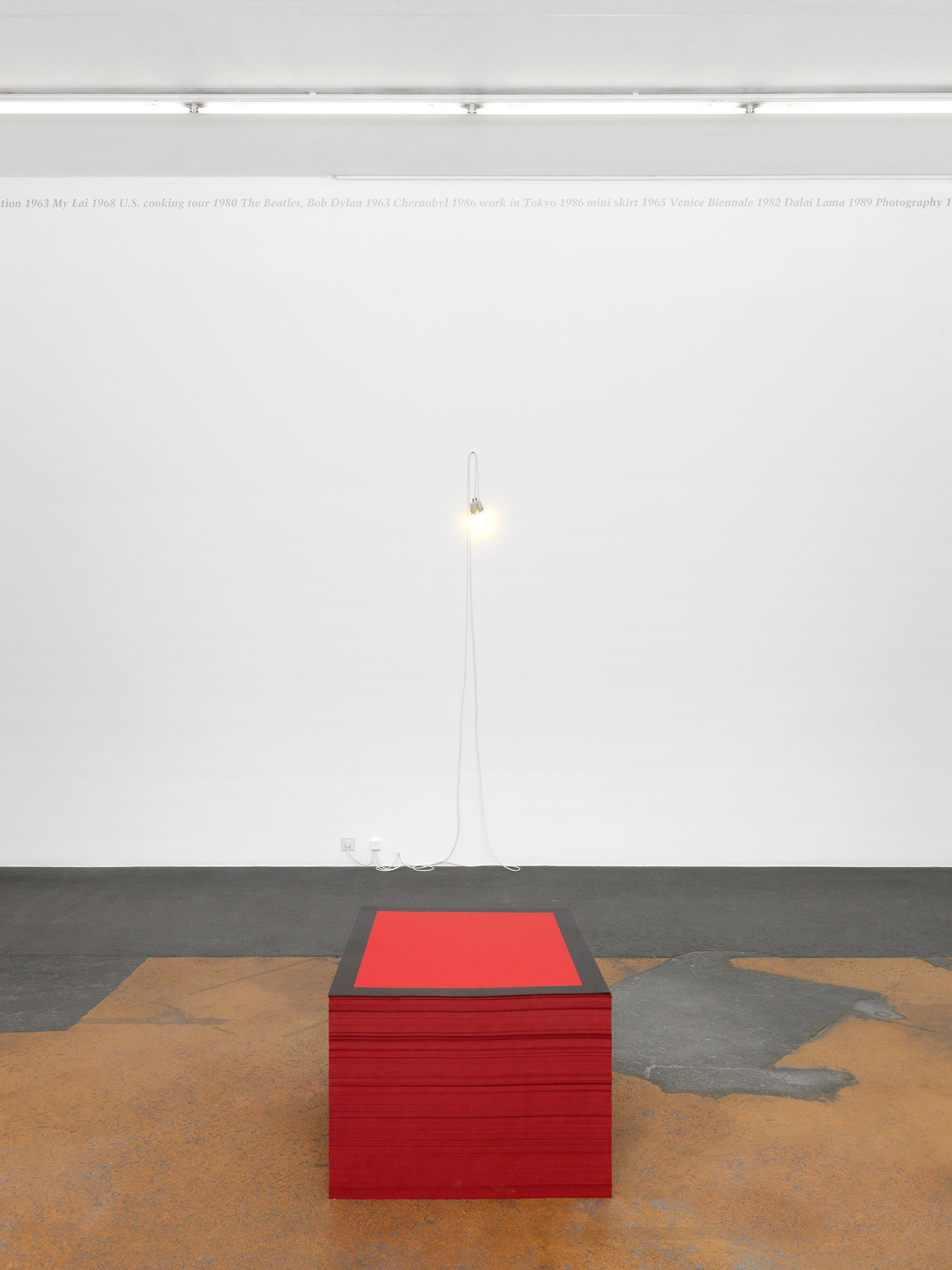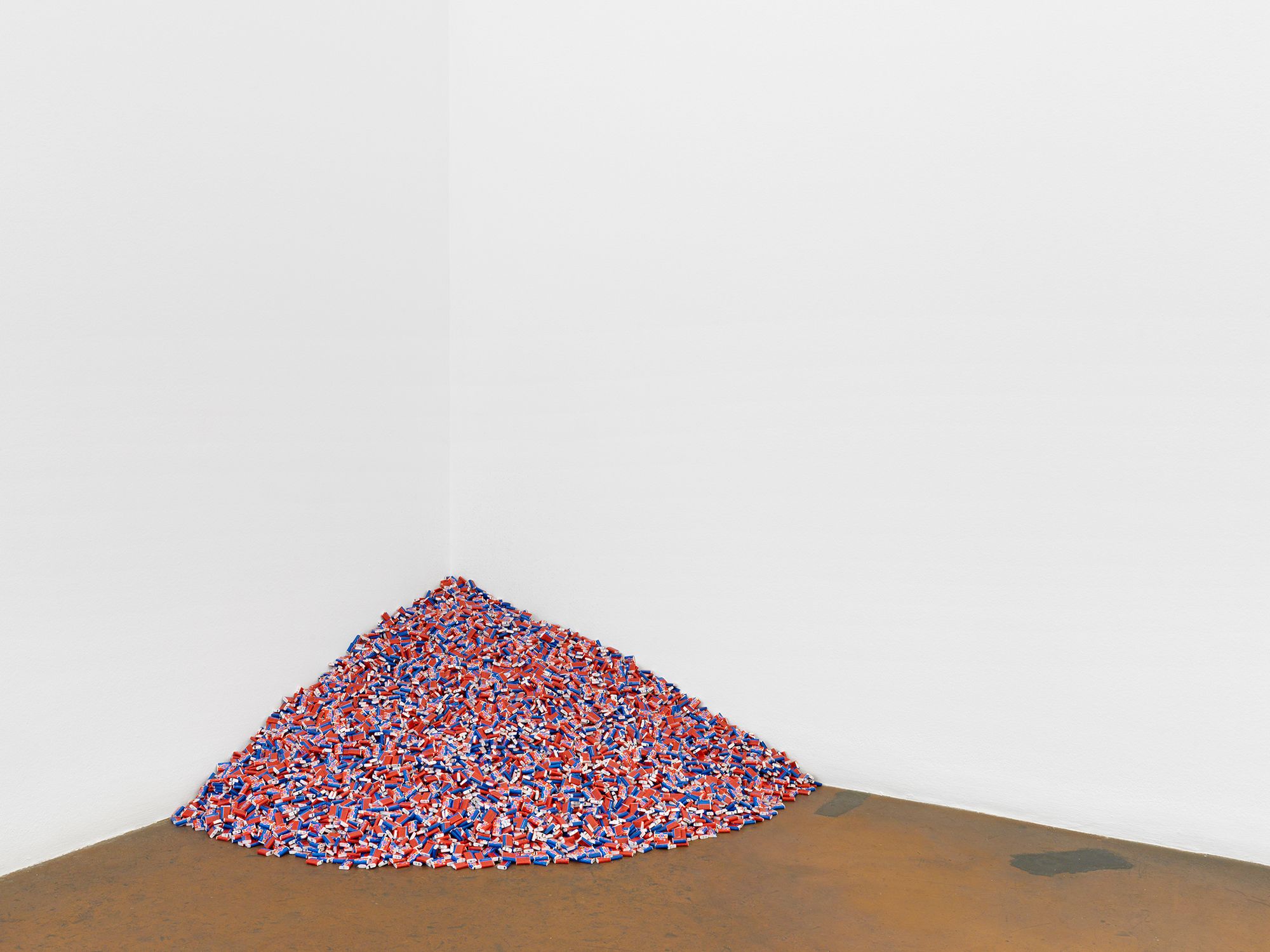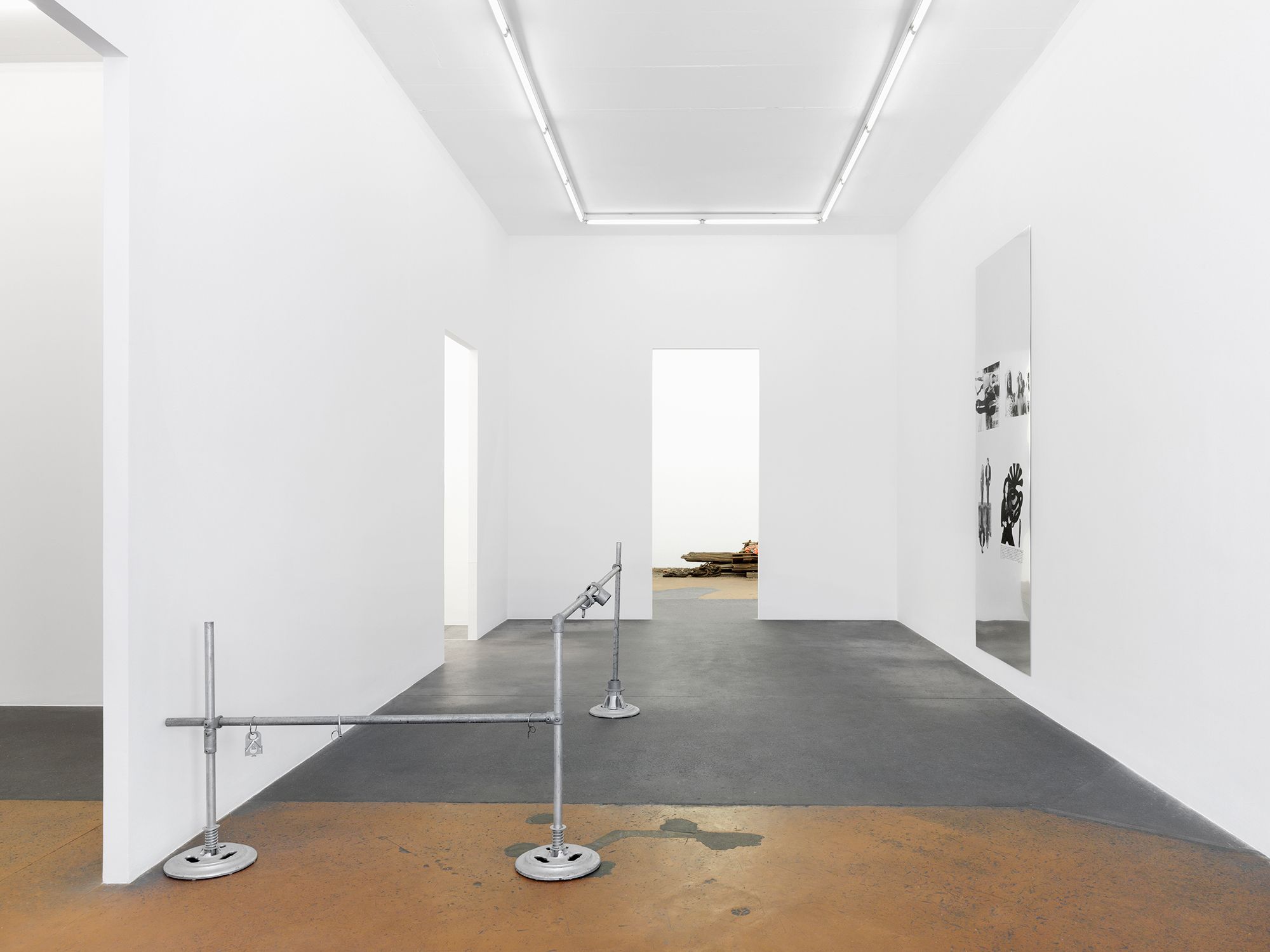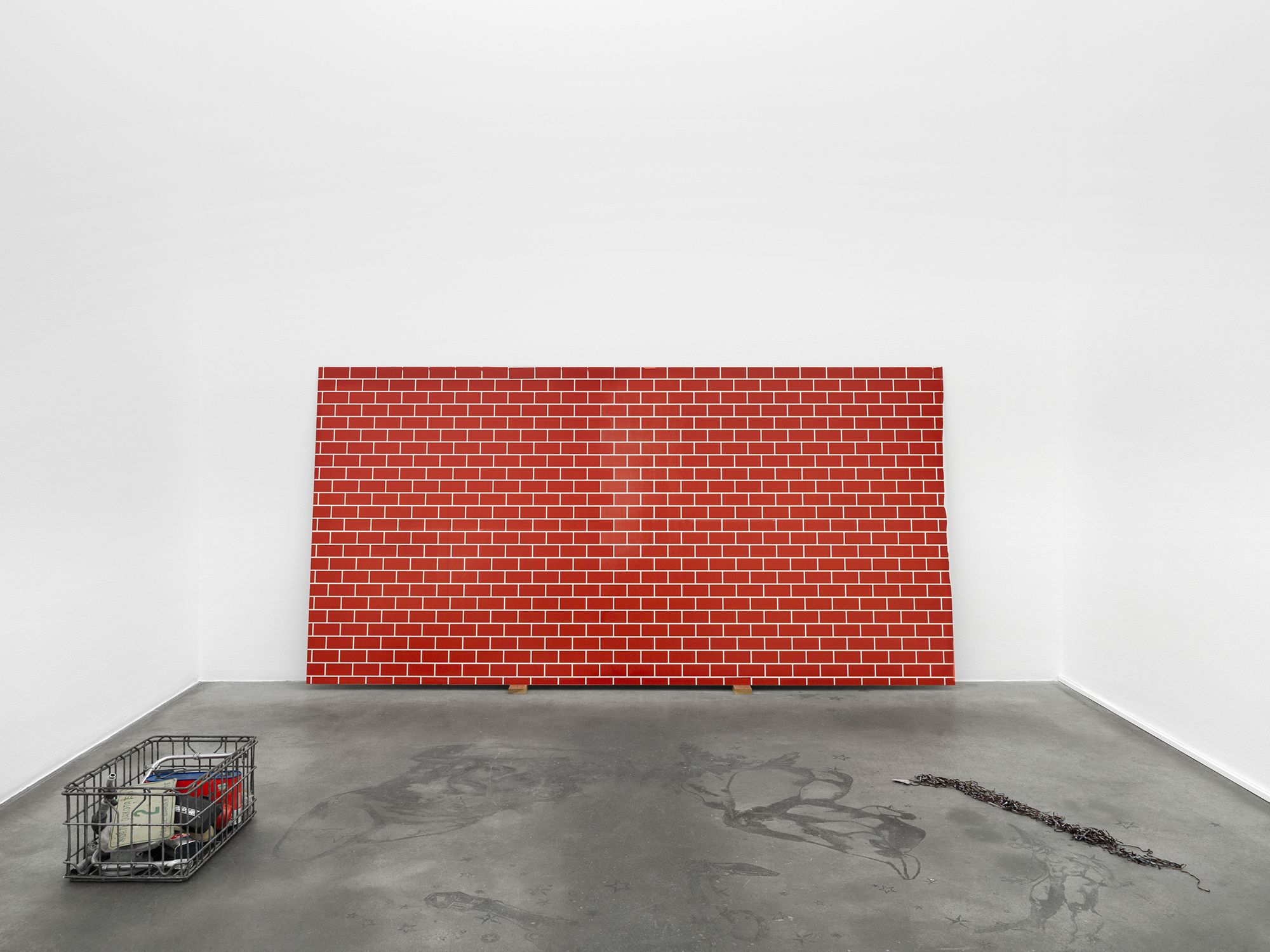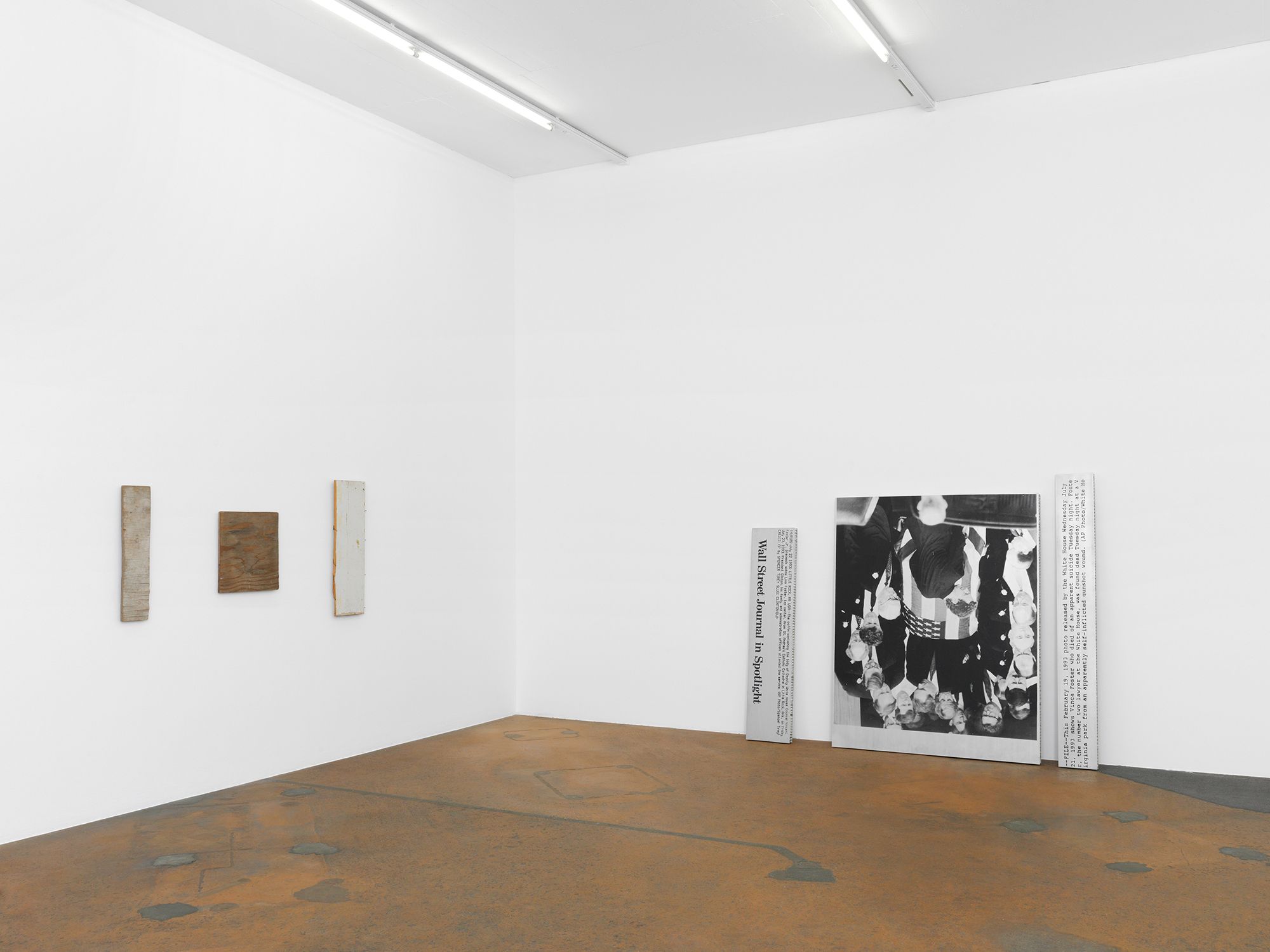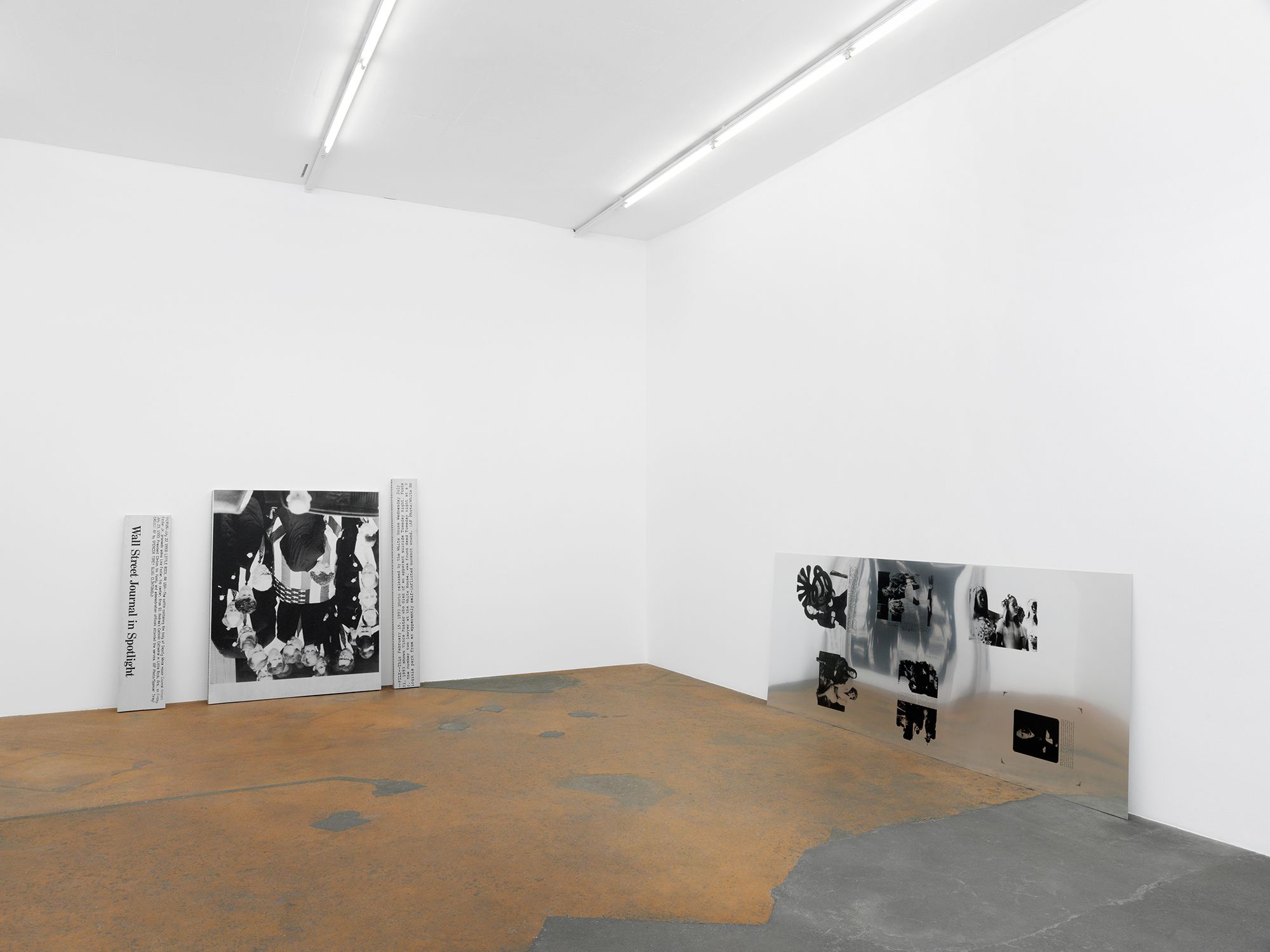After appearing on the New York art scene at the end of the 1980s, Cady Noland, Laurie Parsons and Félix González-Torres have driven the investigations conducted by the “Pictures Generation” towards a more explicitly political territory. By reusing forms from Minimal and Pop art, the three artists have been conducting an acerbic criticism of American ideology and its symbolic violence, questioning all over again the ambiguous relationships which have been formed between public and private spaces.
Between pictures and sculptures, Cady Noland’s screen-prints on aluminium bring out “heroes” and “martyrs” from recent history, as they have been presented by the mass media. Among them, Patty Hearst, the heiress of a press magnate, kidnapped by a group of extreme left-wing terrorists, who ended up adopting their cause, or Vince Foster, a White House advisor the reasons for whose suicide in 1993 remain unclear. A latent violence can also be seen in her tubular sculptures, evoking both urban furniture and the world of prisons, and her baskets of objects, as still-lifes of an American capitalism in which everything can be consumed, both merchandise and human beings.
In a similar rationale, the pile of “things” chosen by Laurie Parsons bear the stigmata of abandon and of the erosion of time. The scraps constituting it have lost all their identity, use, or function. This entropic dimension is reminiscent of practices used by artists such as Robert Smithson; in the museum, these little urban wrecks take on a particular strength, savagely inviting the street into the home of culture.
Despite their minimalistic or conceptual contours, the works of Félix González-Torres are in fact invested with a great political and identitarian content, in a constant toing and froing between the public and intimate spheres. Thus, his portraits place on the same level an individual’s biography and the historical events they lived through. What’s more, the artist’s own life appears behind two light bulbs alluding to the death of his partner. In the end, it is the spectators themselves who are invited to participate directly in the work: they can in fact take away some of the parts of some of the pieces and, thus, contribute to their dissolution in the public space and their dissemination in the private sphere, even within their own bodies.
- Exhibition curated by Paul Bernard and Lionel Bovier
